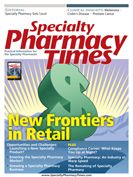Publication
Article
Specialty Pharmacy Times
Oncology
Author(s):
Study Uncovers 6 New Genes Responsible for Melanoma
Scientists from the MD Anderson Cancer Center, the Broad Institute of MIT, and Harvard University have published a melanoma study that identifies 6 frequently mutated genes found to drive the genetic changes of melanoma. The study, published in the journal Cell, is the first to show genomic evidence directly linking damage from ultraviolet (UV) light to melanoma. Researchers analyzed the active portions of DNA involved in protein synthesis in 121 melanoma samples and compared them with normal DNA. They found 86,813 coding mutations, a mutation rate higher than has ever been reported in any other tumor type.
In order to assess the statistical significance of the functional mutations, researchers compared the frequency of mutations in the inactive segments of the DNA (the introns) with the frequency of the mutations in the areas that code for proteins (the exons). This approach uncovered well-known cancer genes BRAF, NRAS, PTEN, TP53, CDKN2A, and MAP2K1, as well as 6 new genes, including RAC1, PPP6C, STK19, SNX31, TACC1, and ARID2.
The research team cross-referenced their results with COSMIC—a database of recurrent mutations—to determine the frequency and characteristics of driver mutations in 21 genes. Of the 262 driver mutations discovered in the 21 genes they examined, 46% of them were found to have been caused by UV-induced damage.
Although the well-known tumor-suppressing gene TP53 was found to have the greatest number of UV-caused mutations, all of the newly identified genes also had a high percentage of mutations caused by UV light.
In addition, 3 of the genes possessed mutations in the exact same position in multiple patients, further suggesting that these “hotspot” mutations contribute to the development of melanoma.
Men with Prostate Cancer Likely to Die from Other Diseases
Although prostate cancer is the most frequently diagnosed form of cancer, the likelihood that a man newly diagnosed with localized prostate cancer detected through prostate-specific antigen testing will die from the disease has declined, according to new research published in the Advance Access online Journal of the National Cancer Institute.
The study—the largest to date examining the causes of death among men with prostate cancer—was based on the data recorded in the United States Surveillance, Epidemiology, and End Results Program (from 1973 to 2008) and the Swedish Cancer and Cause of Death registries (from 1961 to 2008) of nearly 700,000 men. During the study period, prostate cancer accounted for 52% of all reported deaths in Sweden and 30% of reported deaths in the United States among men with prostate cancer, but only 35% of Swedish men and 16% of men from the United States diagnosed with prostate cancer actually died as a result of this disease. Other largely preventable conditions such as heart disease were cited as the cause of death in many of the cases.
“Our study shows that lifestyle changes such as losing weight, increasing physical activity, and quitting smoking, may indeed have a greater impact on patients’ survival than the treatment they receive for their prostate cancer,” said Hans-Olov Adami, MD, senior author and professor of epidemiology at Harvard School of Public Health, in a press release.
Tumor Suppressor Gene a Potential Biomarker for Breast Cancer
New research suggests that cancer breast patients in all subtypes of breast cancer at various stages have an improved response to neoadjuvant regimens if their tumors lack the retinoblastoma tumor suppression gene (RB).
Researchers from Thomas Jefferson University Hospital and the Kimmel Cancer Canter at Jefferson analyzed gene expression profiles and direct histological samples of over 1000 breast cancer patients who had undergone neoadjuvant therapy.
“Together, these data indicate that the loss of RB, which occurs relatively frequently in locally advanced disease, could be a useful tool for defining patients who experience an improved response to neoadjuvant chemotherapy,” said Agnieszka Witkiewicz, MD, PhD, associate professor of pathology, anatomy, and cell biology at Thomas Jefferson University.
The investigators are currently enrolling patients in clinical trials to evaluate the association of RB and another biomarker called PTEN.
Fast Fact: During the study period, prostate cancer accounted for 30% of reported deaths in the United States among men with prostate cancer.
About the Author
Michael C. Wisotsky, PharmD, RPh, practices in Shrewsbury, New Jersey.







